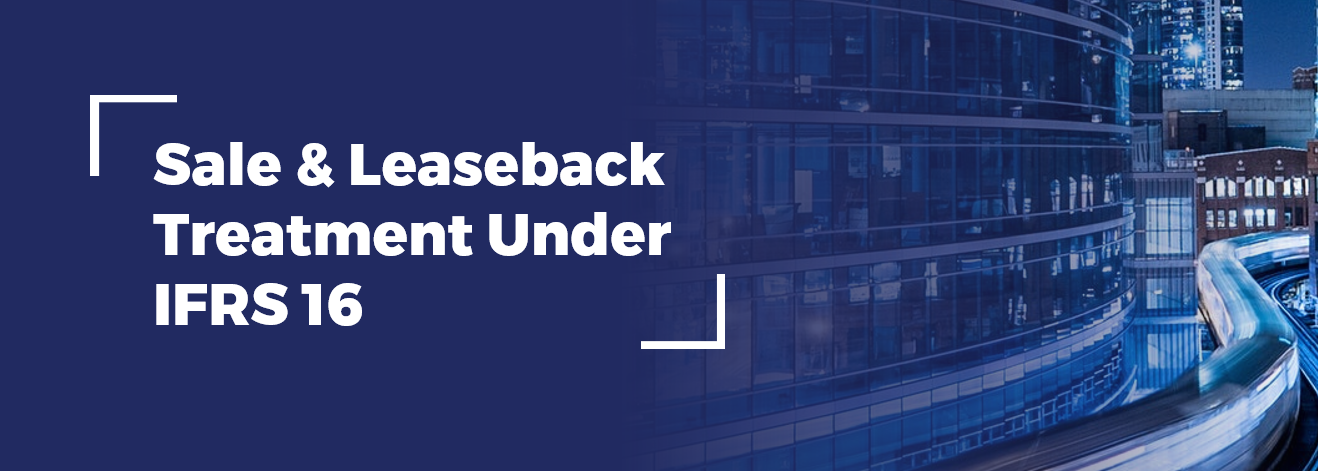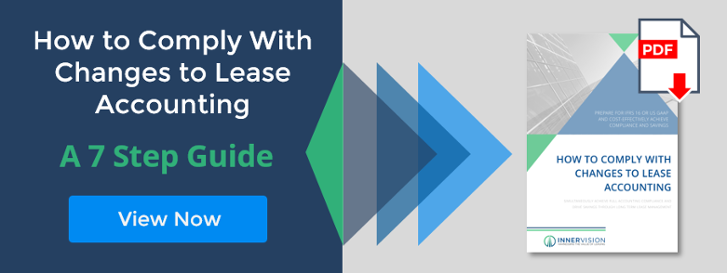Sale & Leaseback Treatment Under IFRS 16
Updated 26th May 2021 | 6 min read Published 4th June 2019

IFRS 16 – A quick recap: Whether leasing real estate or more mobile assets there are changes in the way a business will account for its leases under the new accounting standards IFRS 16/ASC 842 which are required to be implemented by your business in time for accounting periods beginning on or after 1st January 2019.
Awareness of the challenge of transition and implications of compliance are essential. One area of change is the verification and treatment of a valid sale and lease back transaction and how it is accounted for under the new lease accounting rules.
The creation and definition of IFRS 16/ASC 842, the new lease accounting rules, has been the result of a desire for greater transparency in the reporting of lease transactions, their associated assets and the outstanding liabilities created by them.
Under the new lease accounting rules, with just a couple of exceptions, all leases will be placed “on balance sheet” and any transaction or agreement that creates a right of use asset will be classified as a lease even if it were treated as an expense or service previously.
Leasing will remain an important and widely used tool in the acquisition of assets, but the accounting treatment of leases will be become more consistent across industry sectors and across the globe. From a comparability perspective stakeholders and lenders alike will be better informed and can make assessments and investments based on sound and transparent financial measurements.
What is Sale & Leaseback?
In speaking of acquisition of assets then a common form of such procurement and transfer of ownership is a “sale and leaseback” transaction. We see such a transaction when a business transfers ownership of an asset or group of assets by sale to another entity before it (now the lessee) leases the same asset(s) back from the “new” owner (lessor). It is a mechanism long in place and has proved attractive at different times for myriad reasons to different businesses and can involve real estate, a mixed basket of assets or specific assets of a particular nature.
Businesses exist and thrive in their sectors through the use of property, premises, equipment and other assets. They are not necessarily in the business of owning property, premises, equipment or those assets but sometimes find that they have tied up substantial equity and liquidity in the same. Sale and Leaseback offers the opportunity to retain control of the assets (economic ownership) whilst freeing up the equity held in them.
Other businesses may find that a regular draw down with their lessor is best achieved from a procurement perspective by them buying the assets and then bundling them into periodic draw-down through sale and leaseback.
Budgetary constrains, equity release, tax benefits, flexibility or procurement policy have all at some time or place driven sale and leaseback – it is there as a tool in the acquisition of the availability of assets.
What was the Treatment under IAS 17?
Previously under accounting rules for an operating leaseback, the seller/Lessee would have sold the complete asset at the lower of fair market value and net book value and leased the asset back at a fair market rate. The rentals on the leaseback would have been treated as expenses on the P&L whilst the balance sheet would have reflected the exchange of the assets for cash. Any gain crystallised by the sale price to the buyer/lessor over the carrying amount would be treated as a profit (with a finance lease then there is essentially no sale as the business has significantly retained all the risk and reward and then the gain would be amortised over the term of the lease). Most usually the sale and leaseback would be required to occur prior to the assets being held by the original buyer for more than a set accounting period if the assets were to be sold to the buyer/lessor at full purchase cost by the seller/lessee.
What is the Treatment under IFRS 16
Under IFRS 16, at first glance, the same rules apply – that is a sale and leaseback transaction will occur when an entity (the seller/lessee) transfers an asset to another entity (the buyer/lessor) and leases that asset back from the buyer/lessor. The determination of whether a sale has or has not occurred differs in that IFRS 15 is applied with regard to a performance obligation being satisfied.
If the IFRS 15 conclusion is that a sale has not occurred, then the seller/lessee continues to account for the asset despite its “sale”. This is usually called a “sale and finance leaseback” and IFRS 9 is applied which will create a financial liability for the seller/lessee and a financial asset for the buyer/lessor.
But this article is very much concerned with a sale having occurred and, in that case, in place of the transferred asset, a “right of use asset” is recognised. Called a “sale and operating leaseback“, here substantially all of the risk together with reward in the asset is transferred from the lessee to the lessor. Profit or loss on disposal at fair value (FV) is taken to the P&L immediately. Where the sale is at a level higher than FV then anything over FV is released over the lease term.
A sale and Operating Leaseback example
As a lessee you have acquired mixed assets for your IT department. At cost the value of the assets is £130,000 and they were acquired earlier in the year and £120,000 is the agreed fair value as well as net book or written down value (carrying value).
The owner (now the seller) agrees to sell the assets to an independent lessor (the buyer/lessor) who in turn agrees to lease the assets back to the seller/lessee under a right of use contract for fixed rentals of £10,000 per quarter over a 3-year term.
Assuming an internal borrowing rate of 4.4% then the present value of the rentals will equate to £113,073.
Under IAS 17:
The cost value being higher than the fair value realised results in an immediate impairment of £10,000 which is taken as a debit on the P&L and a credit on the PPE (Property, Plant and Equipment tangible assets).
The cash account is debited with £120,000 and the PPE credited with £120,000
Assuming the rentals are at fair value then they are taken to the P&L as they occur.
Under IFRS 16:
Calculate the present value of the lease rentals against the fair value of the assets £113,073/£120,000 = 94.22%
Debit cash for £120,000
Debit ROU (right of use) asset £113,073 (carrying value * 94.22%)
Credit PPE – £120,000
Credit lease liability – £113,073
Credit gain on disposal – £0 (if carrying value had been different to the sale price then this would be where the gain/loss is recorded)
(Innervision would like to make clear that the above examples are for illustrative purposes only and should NOT be relied upon and viewed in any way as professional advice or service.)
Sale and Leaseback is likely to remain as popular under IFRS 16 as it ever was but leasing as a whole is facing fundamental challenges to its pre-eminence as an asset acquisition tool as the world gets to grips with the new standards.
For further information on the effects and impact of IFRS 16 and for guidelines on how to comply today then download Innervision’s 7 Step Guide to lease accounting compliance below:
Disclaimer: this article contains general information about the new lease accounting standards only and should NOT be viewed in any way as professional advice or service. The Publisher will not be responsible for any losses or damages of any kind incurred by the reader whether directly or indirectly arising from the use of the information found within this article.


